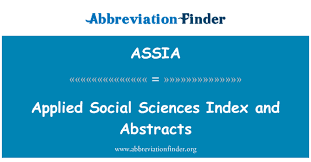Methods of assessing quadriceps strength: a systematic review
DOI:
https://doi.org/10.51736/sa.v7iEspecial%203.278Keywords:
quadriceps muscle, isokinetic dynamometer, handheld dynamometer, reliability, validity, method.Abstract
Assessment of quadriceps strength is essential in rehabilitation and sport to design effective training programs and monitor recovery. However, there are a variety of methods used but their reliability and validity has not been fully tested. The aim of this study is to determine the most accessible, reliable and valid methods of quadriceps strength assessment. Therefore, a systematic review based on the PRISMA method guidelines was carried out in the databases PubMed, Cochrane, Google Scholar, Medline, including a total of 15 articles. A remarkable validity and reliability was detected in the different configurations of the hand-held dynamometer. Nevertheless, the isokinetic dynamometer has an excellent degree of reliability and validity, although it turns out to be very inaccessible and expensive. On the other hand, future investigations are expected within pathological populations.
Downloads
References
Bader, R. (2017). Intrarater reliability of muscle strength and hamstring to quadriceps strength imbalance ratios during concentric , isometric and eccentric maximal voluntary contractions using the isoforce dynamometer. 0(Icc).
Chamorro, C., Armijo-Olivo, S., De La Fuente, C., Fuentes, J., & Javier Chirosa, L. (2017). Absolute reliability and concurrent validity of hand held dynamometry and isokinetic dynamometry in the hip, knee and ankle joint: Systematic review and meta-analysis. Open Medicine (Poland), 12(1), 359–375. https://doi.org/10.1515/med-2017-0052
de Araujo, J. B., Rodrigues, R., de Azevedo, R., da Silva, B. G. C., Pinto, R. S., Vaz, M. A., & Baroni, B. M. (2015). Inter-machine reliability of the Biodex and Cybex isokinetic dynamometers for knee flexor/extensor isometric, concentric and eccentric tests. Physical Therapy in Sport, 16(1), 59–65. https://doi.org/10.1016/j.ptsp.2014.04.004
El-Ansary, D., Marshall, C. J., Farragher, J., Annoni, R., Schwank, A., McFarlane, J., Bryant, A., Han, J., Webster, M., Zito, G., Parry, S., & Pranata, A. (2021). Architectural anatomy of the quadriceps and the relationship with muscle strength: An observational study utilising real-time ultrasound in healthy adults. Journal of Anatomy, 239(4), 847–855. https://doi.org/10.1111/joa.13497
Galvão, T. F., Tiguman, G. M. B., Sarkis-Onofre, R., Page, M. J., McKenzie, J. E., Bossuyt, P. M., Boutron, I., Hoffmann, T. C., Mulrow, C. D., Shamseer, L., Tetzlaff, J. M., Akl, E. A., Brennan, S. E., Chou, R., Glanville, J., Grimshaw, J. M., Hróbjartsson, A., Lalu, M. M., Li, T., … Moher, D. (2022). Declaración PRISMA 2020: una guía actualizada para la publicación de revisiones sistemáticas. Epidemiologia e Servicos de Saude, 31(2), 1–12. https://doi.org/10.5123/S1679-49742022000200033
Garcia, D., de Sousa Neto, I. V., de Souza Monteiro, Y., Magalhães, D. P., Ferreira, G. M. L., Grisa, R., Prestes, J., Rosa, B. V., Abrahin, O., Martins, T. M., Vidal, S. E., de Moura Andrade, R., Celes, R. S., Rolnick, N., & da Cunha Nascimento, D. (2023). Reliability and Validity of a Portable Traction Dynamometer in Knee-Strength Extension Tests: An Isometric Strength Assessment in Recreationally Active Men. Healthcare (Switzerland), 11(10). https://doi.org/10.3390/healthcare11101466
Gomi, M., Hirano, M., & Kato, M. (2015). Validity of isometric muscle strength measurements of the shoulder joint using a hand-held dynamometer and belt: A comparison with an isokinetic dynamometer. Rigakuryoho Kagaku, 30(2), 317–321. https://doi.org/10.1589/rika.30.317
Hansen, E. M., McCartney, C. N., Sweeney, R. S., Palimenio, M. R., & Grindstaff, T. L. (2015). Hand-held Dynamometer Positioning Impacts Discomfort During Quadriceps Strength Testing: A Validity and Reliability Study. International Journal of Sports Physical Therapy, 10(1), 62–68. http://www.ncbi.nlm.nih.gov/pubmed/25709864%0Ahttp://www.pubmedcentral.nih.gov/articlerender.fcgi?artid=PMC4325289
Katoh, M. (2015). Reliability of isometric knee extension muscle strength measurements made by a hand-held dynamometer and a belt: A comparison of two types of device. Journal of Physical Therapy Science, 27(3), 851–854. https://doi.org/10.1589/jpts.27.851
Kim, W. K., Kim, D. K., Seo, K. M., & Kang, S. H. (2014). Reliability and validity of isometric knee extensor strength test with hand-held dynamometer depending on its fixation: A pilot study. Annals of Rehabilitation Medicine, 38(1), 84–93. https://doi.org/10.5535/arm.2014.38.1.84
Lesnak, J., Anderson, D., Farmer, B., Katsavelis, D., & Grindstaff, T. L. (2019). Validity of Hand-Held Dynamometry in Measuring Quadriceps Strength and Rate of Torque Development. International Journal of Sports Physical Therapy, 14(2), 180–187. https://doi.org/10.26603/ijspt20190180
Martins, J., Da Silva, J. R., Da Silva, M. R. B., & Bevilaqua-Grossi, D. (2017). Reliability and validity of the belt-stabilized handheld dynamometer in hip-and knee-strength tests. Journal of Athletic Training, 52(9), 809–819. https://doi.org/10.4085/1062-6050-52.6.04
Mellemkjær, F. H., Madeleine, P., Nørgaard, J. E., Jørgensen, M. G., & Kristiansen, M. (2024). Assessing Isometric Quadriceps and Hamstring Strength in Young Men and Women: Between-Session Reliability and Concurrent Validity. Applied Sciences, 14(3), 958. https://doi.org/10.3390/app14030958
Mondin, D., Owen, J. A., Negro, M., & D’Antona, G. (2018). Validity and reliability of a non-invasive test to assess quadriceps and hamstrings strength in athletes. Frontiers in Physiology, 9(November), 1–7. https://doi.org/10.3389/fphys.2018.01702
Muff, G., Dufour, S., Meyer, A., Severac, F., Favret, F., & Geny, B. (2016). Comparative assessment of knee extensor and flexor muscle strength measured using a hand-held vs. isokinetic dynamometer. 2445–2451.
Park, S., Myong, Y., Cho, M., Cho, S. Y., Lee, W. H., Oh, B. M., & Kim, S. (2024). Design and validation of a wearable dynamometry system for knee extension-flexion torque measurement. Scientific Reports, 14(1), 1–10. https://doi.org/10.1038/s41598-024-60985-9
Sung, K. S., Yi, Y. G., & Shin, H. I. (2019). Reliability and validity of knee extensor strength measurements using a portable dynamometer anchoring system in a supine position. BMC Musculoskeletal Disorders, 20(1), 1–8. https://doi.org/10.1186/s12891-019-2703-0
Suzuki, T. (2015). Reliability of measurements of knee extensor muscle strength using a pull-type hand-held dynamometer. Journal of Physical Therapy Science, 27(3), 967–971. https://doi.org/10.1589/jpts.27.967
Ushiyama, N., Kurobe, Y., & Momose, K. (2017). Validity of maximal isometric knee extension strength measurements obtained via belt-stabilized hand-held dynamometry in healthy adults. Journal of Physical Therapy Science, 29(11), 1987–1992. https://doi.org/10.1589/jpts.29.1987
Published
How to Cite
Issue
Section
License
Copyright (c) 2024 Alison Nicole Morales Cevallos, Victoria Estefanía Espín Pastor

This work is licensed under a Creative Commons Attribution-NonCommercial-ShareAlike 3.0 Unported License.






















































